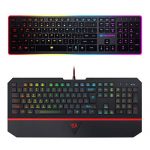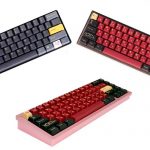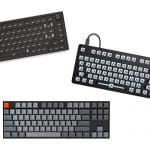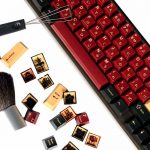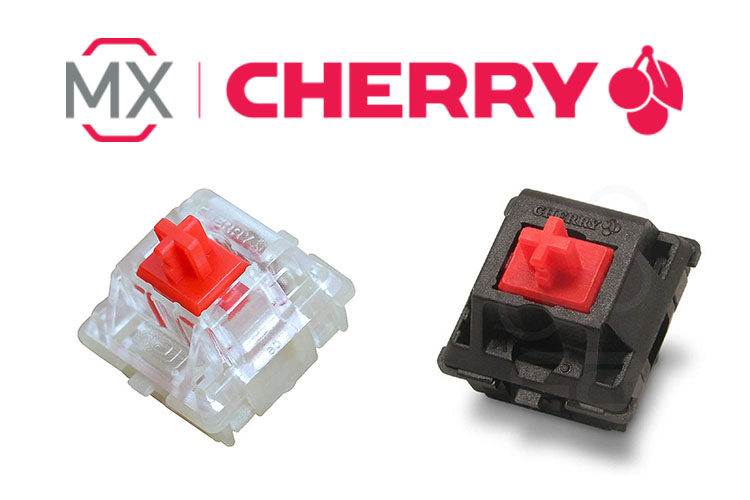
Cherry is one of the biggest names in the mechanical keyboard market. They have set the bar for mechanical switches and have done so much innovation in the world of mechanical keyboards. Even with today’s saturated market, Cherry remains one of the most trusted brands in the industry.
Cherry is responsible for giving birth to the MX style switch in the 1980s. And throughout the decades, they have created many well-known mechanical keyboard switch designs such as the Cherry MX Blue, Black, Brown, and Red. And while their patent already expired in 2014, they continue to develop and set the standard for mechanical keyboard switches.
In this article, we will be exploring the rich history of the Cherry MX brand. We’ll go through their early years and the formation of their company, their role during the fall of mechanical keyboards, their return to the market in the late 2000s, and their role in mechanical keyboards today.
Cherry’s Early Years
Cherry GmbH is a company based in Germany whose focus is entirely on computer peripherals, specifically mice and keyboards. However, they were initially a totally different company that didn’t even have anything to do with computers and computer peripherals.
You can trace cherry’s roots back to the basement of a restaurant in Illinois, USA, founded by Walter L. Cherry. He took the fondness he had fostered for electrical engineering and ventured through the company’s first steps with microswitches.
This gained the company a name when it entered the US automobile market. However, after the initial start-up in the USA, Walter Cherry took the company and left for Europe, and it’s since expanded throughout several countries.
Cherry’s entire company focused on one specialty—switches. Switches for many things, ranging from cars to arcade games, and their specialization allowed them focused and efficient quality manufactured products. While not marketed as such, the switches were often known as “cherry switches.” And when 1973 arrived, so did the patent for their first keyboard switch.
Birth of the Cherry MX Switch
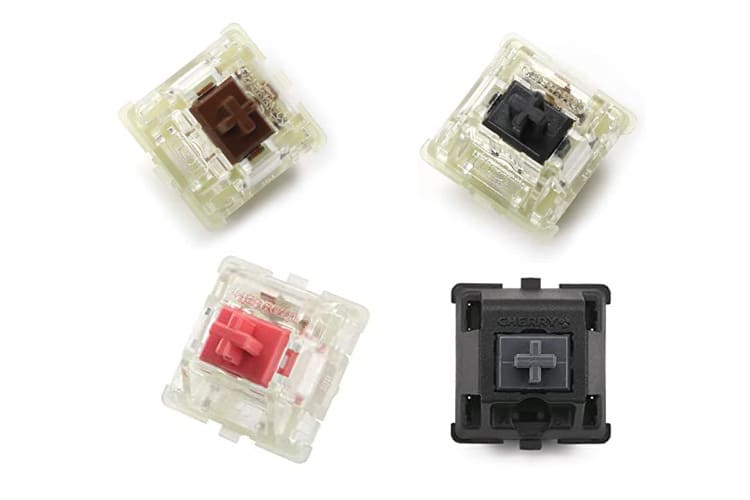
Cherry introduced their M6 patented keyboard switches in the late 1970s. But come 1983, Cherry introduced an improved version that would lead them to spearheads in keyboard development. This breakthrough was the Cherry Mechanical X-Point Switches, or simply the MX Switches.
Cherry had made a new switch solely for keyboards, despite being part of the automobile industry at the time. The first in the MX line was the Cherry MX Black Switches, and this led to the labeling of other future switch variations to be denoted by color. The MX Black was a purely linear switch, and despite how it was the first one in the line, it hasn’t been retired.
Cherry in the 2000s
As with all products within the technology space, development progressed rapidly. People eventually found alternatives for the mechanical keyboard, resulting in the invention of the membrane-based keyboard.
Membrane keyboards may have different workings from model to model, but the general structure is the same. Input is made from electrical connections between the keys and the underlying electric circuit. Membranes were introduced during the 1990s and were used more and more until they became the standard for keyboard manufacturing.
There were several reasons, with the largest ones being that they were cheaper to produce on a large scale, and the new favored aesthetic among the populace veered toward sleeker, slimmer, and compact designs for them to be mobile. This was only further encouraged when laptops were introduced.
Mechanical keyboards were no longer the standard and were pushed into a niche market, and other keyboard companies had moved on to other business ventures. This is not to say mechanical keyboards were disestablished entirely, as many vintage enthusiasts still preferred them over membrane-based ones.
Cherry did not give up on keyboards either. The founder’s son, Paul, merged with another company that entirely shifted its focus onto keyboards. However, the popularity of mechanical keyboards certainly went down, and it seemed to remain that way for the foreseeable future.
Return of Mechanical Keyboards in 2010

While membrane keyboards remained as the standard, there was an activity, hobby, or profession, depending on who you ask, that urged the mechanical keyboard back into the spotlight. Gaming needed a variety of things that you could find well among the higher-end keyboards, and mechanical ones provided tactile response, accuracy, and durability, which are especially attractive when playing anything that requires reflexive skills.
With the rise of gaming came the rise of mechanical keyboards once again. In 2018, there had been a further increase in interest in mechanical keyboards, especially online. This was likely spurred on by a combination between word of mouth, online influencers, tech enthusiasts, and gamers. Especially those who used the keyboards themselves and indirectly gave the product exposure when using them in front of their audience.
That’s why, during the returning boom during those years, high-range keyboards started to use mechanical switches, and all of them exclusively used Cherry MX Switches. Keyboards like Razor Blackwidow and Steeleseries 6GV2 were only a few of the names who used them. Partnership with Corsair also led to changes to the switch line-up, and the number of companies that tapped Cherry for their switches only increased with time.
The switch most often recommended in the gaming sphere was the MX Red switches, as they were linear switches that needed very minimal force to activate the input. Outside of the sphere, namely typing, the MX Blue and MX Brown were tied in popularity. MX Blue was audible and tactile, making it popular for rapid typing like writing and programming. It was fairly noisy, though, where the MX Brown comes in. The MX Brown was also a tactile switch but was quieter, making it useful within an open space, especially for those who work among others, like in an office.
As you may have observed, the different Cherry switches are all separated and labeled by color, and each one has its own unique components that can let a consumer choose what they may need.
Expiration of Cherry’s MX Switch Patent in 2014

All patents come with an expiration date, and the one introduced to Cherry in 1973 was no exception. It expired in 2014, which paved the way for other companies to seize the plans and develop their own iterations on the design or clone them. This led to the rise of brands such as Kailh and Gateron that would compete against Cherry. In addition, gaming keyboard brands such as Logitech G and Razer would stop using Cherry MX switches to develop their own in-house gaming switches.
The expiration of the Cherry MX patent also helped make mechanical switches more affordable. It was during this period that mechanical keyboards started becoming more accessible. The market also became very competitive, with new switches often being released. Cherry’s response to their newfound competition was to make new switch models and bring innovation once again.
Cherry in Today’s Market

Despite the rapid change in today’s market, Cherry has still maintained its position as one of the most trusted brands in the mechanical keyboard market. They are still the main provider of gaming brands such as Corsair and maintain their exposure to esports and various gaming-related entities. But with that said. Things can still go out of favor for Cherry.
The current trend in today’s mechanical keyboard market largely favors custom keyboards. Without too much detail, these allow users to choose their own switches and build their own keyboard depending on their specific needs. And so far, Cherry hasn’t been the choice of most enthusiasts.
This is mostly because many enthusiast models have taken the spotlight, such as the Gateron Ink Black V2 and Gazzew Boba U4T. And with how fast new switches are being produced each day, Cherry doesn’t seem to be able to keep up.
It also doesn’t help that Cherry isn’t involving itself in these smaller communities and focuses on larger and more profitable entities. Only time will tell if Cherry will survive another decade in the mechanical keyboard market. But as it stands, they make great switches but are no longer the best switch manufacturer.

The KBE team is dedicated to sharing our knowledge and creating useful resources about computer keyboards. This article was written as a team collaboration, combining our knowledge and years of experience using, building and modding keyboards. Meet the team here.
